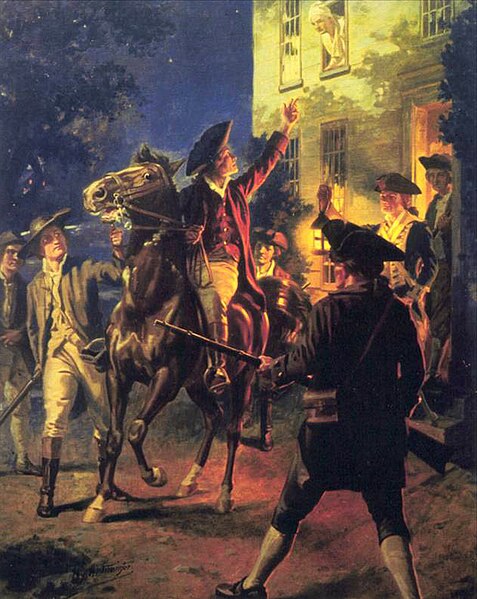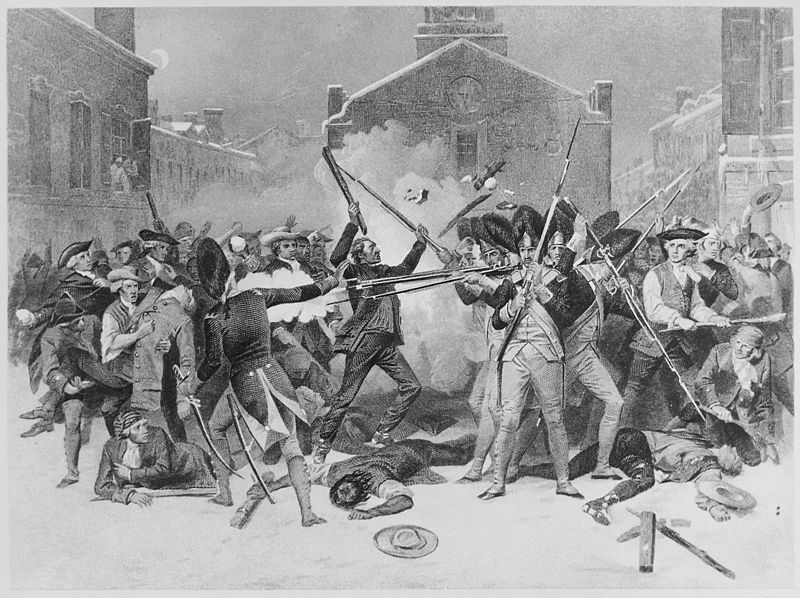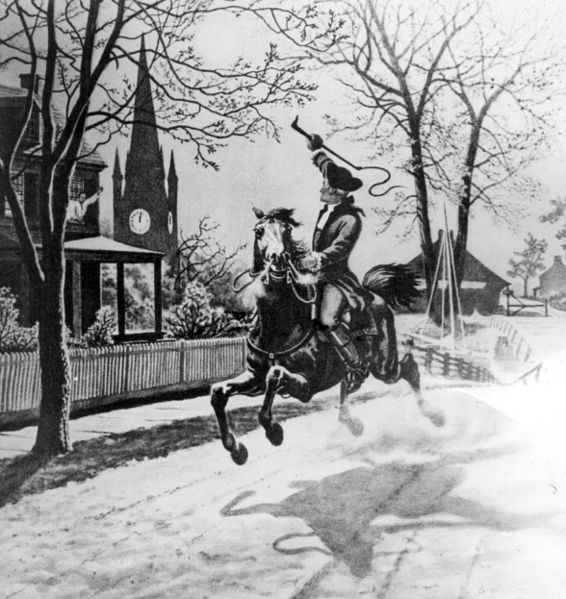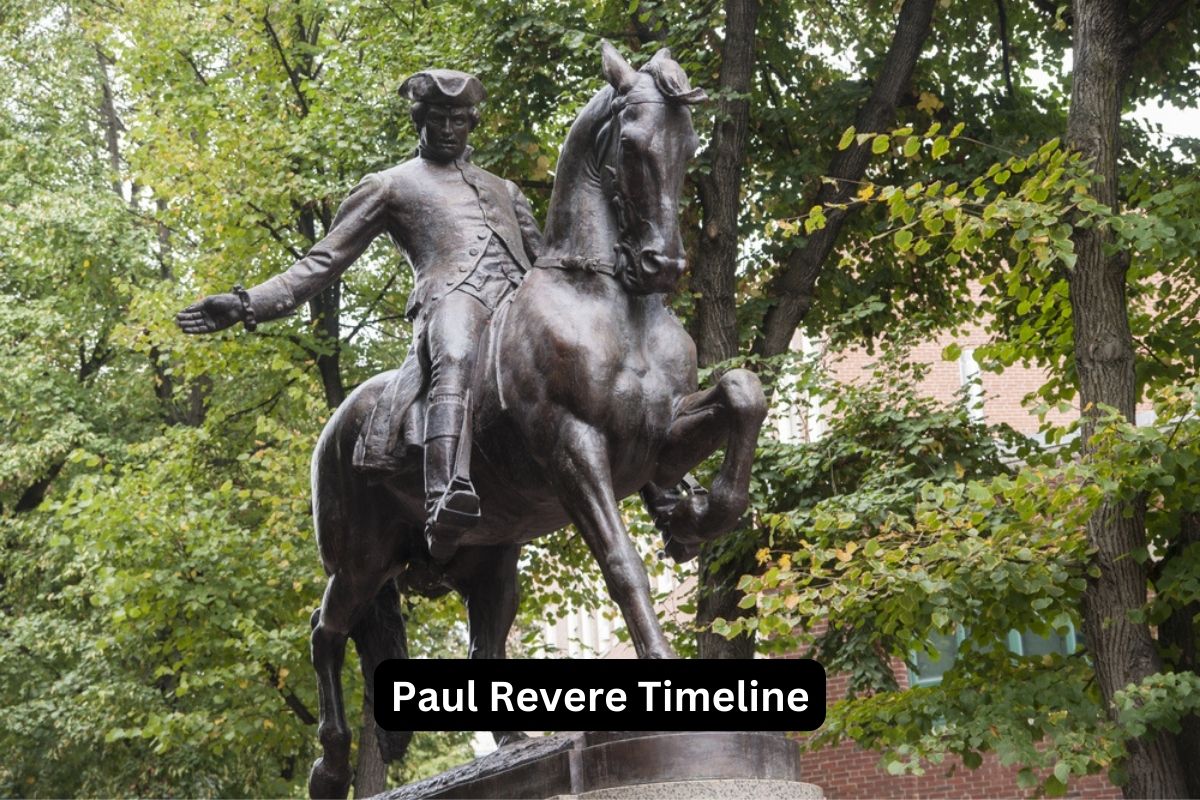Paul Revere (1735-1818) was a prominent American patriot and versatile craftsman known for his crucial role in the American Revolution and his contributions to American industry.
His legendary midnight ride to warn of approaching British troops and his participation in pivotal events such as the Boston Tea Party made him a symbol of American independence and resistance to British rule.
Beyond his patriotic activities, Revere was an accomplished silversmith, engraver, and entrepreneur, leaving a lasting impact on both American history and craftsmanship.
| Year | Event |
|---|---|
| 1735 | Paul Revere is born in Boston, Massachusetts. |
| 1756 | Revere becomes an apprentice to his father to learn silversmithing and engraving. |
| 1757 | He joins the Masonic Lodge in Boston. |
| 1765 | Revere becomes involved in politics and joins the Sons of Liberty. |
| 1770 | He engraves a famous illustration of the Boston Massacre. |
| 1773 | Revere participates in the Boston Tea Party. |
| April 18, 1775 | Revere goes on his famous midnight ride to warn of British troops. |
| April 19, 1775 | The Battles of Lexington and Concord mark the start of the Revolutionary War. |
| 1775-1780 | Revere serves as a lieutenant colonel in the Massachusetts militia. |
| 1776 | He participates in the Penobscot Expedition. |
| 1780 | Revere becomes the official government printer for Massachusetts. |
| 1792 | He opens a foundry for producing bells and cannons. |
| 1795 | Revere produces the first copper sheet rolling mill in America. |
| 1800 | He retires from his business. |
| May 10, 1818 | Paul Revere passes away in Boston, Massachusetts. |
| 1861 | Henry Wadsworth Longfellow publishes “Paul Revere’s Ride” during the American Civil War. |
Timeline of Paul Revere
1735: Paul Revere is born in Boston, Massachusetts
Paul Revere is born on January 1st in Boston, Massachusetts. He is the son of Apollos Rivoire, a French Huguenot immigrant, and Deborah Hichborn. His birth into a family of modest means would shape his early life and career choices.

1756: He becomes an apprentice to his father to learn silversmithing and engraving
At the age of 21, Revere begins his apprenticeship to his father, Apollos Rivoire, to learn the art of silversmithing and engraving.
During this period, he develops skills in crafting silverware, jewelry, and other decorative items. This apprenticeship lays the foundation for his future career as a renowned silversmith.
1757: Revere joins the Masonic Lodge in Boston
Revere’s involvement in the Masonic Lodge in Boston marks the beginning of his engagement with fraternal organizations.
The Masonic Lodge would become an important part of his life, connecting him with influential individuals who shared his interest in Enlightenment ideals and political activism. These connections would play a role in his later patriotic activities.
1765: He joins the Sons of Liberty to protest British taxation policies
As tensions between the American colonies and Great Britain mount, Revere becomes increasingly engaged in political activities.
He joins the Sons of Liberty, a secret society formed in opposition to British taxation policies, including the highly unpopular Stamp Act of 1765.
The Sons of Liberty would go on to play a pivotal role in organizing resistance against British rule, and Revere’s association with them reflects his early commitment to the cause of American independence and liberty.
1770: Revere engraves an illustration of the Boston Massacre
In 1770, as tensions between the American colonies and British soldiers stationed in Boston reached a boiling point, Revere became involved in a significant event in American history.
On March 5th, he created a famous engraving depicting the Boston Massacre, a tragic incident in which British soldiers fired upon a group of American colonists, resulting in several deaths.
Revere’s engraving, titled “The Bloody Massacre in King-Street,” was widely circulated and played a crucial role in galvanizing anti-British sentiment in the colonies.

1773: He participates in the Boston Tea Party
Revere’s dedication to the cause of American independence continued to grow. On December 16, 1773, he played a prominent role in the Boston Tea Party, one of the most iconic acts of resistance against British rule.
Disguised as Mohawk Indians along with other patriots, Revere and his compatriots boarded British ships in Boston Harbor and dumped 342 chests of tea into the harbor in protest of the British Tea Act, which granted a monopoly on tea sales to the British East India Company.
April 18, 1775: Revere goes on his famous midnight ride to warn of British troops
Paul Revere’s most celebrated moment occurred on the night of April 18, 1775. He was entrusted with a critical mission: to warn the American colonists in Massachusetts that British troops were advancing.
Setting out on his legendary midnight ride, Revere rode from Boston to Lexington, shouting his famous warning, “The British are coming! The British are coming!” This ride served as an early warning system and allowed American militia forces to prepare for the impending conflict.

April 19, 1775: The Battles of Lexington and Concord mark the start of the Revolutionary War
The early morning hours of April 19, 1775, saw the Battles of Lexington and Concord, which marked the official commencement of the American Revolutionary War.
American militia forces engaged British troops in these two towns, and Revere’s warning played a pivotal role in ensuring that the colonists were ready for the British advance. His midnight ride became a legendary symbol of American resistance and the spirit of liberty.
1775-1780: Revere serves as a lieutenant colonel in the Massachusetts militia
During the initial years of the American Revolution, Paul Revere continued his service to the patriot cause. He held the rank of lieutenant colonel in the Massachusetts militia and was involved in various military activities.
Revere’s skills in artillery and engineering proved valuable, and he played a role in fortifying Boston Harbor’s defenses against British forces. He also participated in the Penobscot Expedition of 1779, an ill-fated campaign against British forces in Maine.
1780: He becomes the official government printer for Massachusetts
After the American Revolution, Paul Revere transitioned into a new phase of his career. He became the official government printer for Massachusetts, responsible for producing various government documents and publications.
This role allowed him to continue contributing to the governance and administration of the newly independent state.
1792: Revere opens a foundry for producing bells and cannons
Revere expanded his business ventures by opening a foundry. At his foundry, he manufactured a range of products, including bells and cannons. His foundry became known for producing high-quality items, and it played a role in supplying critical military equipment during times of conflict.
1795: He establishes the first copper sheet rolling mill in America
A notable achievement during this period was Revere’s establishment of the first copper sheet rolling mill in America. This innovation had a significant impact on the copper industry, as it enabled the production of larger and more uniform sheets of copper.
Copper sheets produced in Revere’s mill found various applications in manufacturing, construction, and other industries.
1800: Revere retires from his business
By the turn of the 19th century, Paul Revere began to wind down his business activities. After decades of entrepreneurship in various fields, he entered a period of semi-retirement.
Although he reduced his involvement in business, his legacy as an innovator and industrial pioneer was firmly established.
May 10, 1818: Paul Revere passes away in Boston, Massachusetts
Tragically, Paul Revere passed away on May 10, 1818, in Boston, Massachusetts. He lived to the age of 83, and his passing marked the end of an era. Revere’s contributions to American history, both as a patriot and an entrepreneur, left a lasting impact on the nation.
1861: Henry Wadsworth Longfellow publishes “Paul Revere’s Ride” during the American Civil War, celebrating his midnight ride
Paul Revere’s name and legacy were revived during the American Civil War, more than four decades after his passing. The renowned American poet Henry Wadsworth Longfellow published the poem “Paul Revere’s Ride” in 1861.
This poem celebrated Revere’s famous midnight ride and his role as a symbol of American independence and courage. Longfellow’s poem further solidified Revere’s place in American folklore and history.
